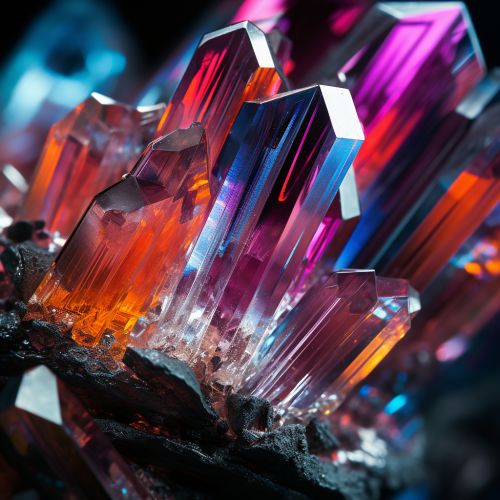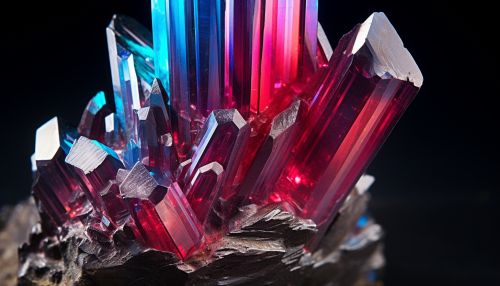Cadmium telluride
Introduction
Cadmium telluride (CdTe) is a crystalline compound formed from cadmium and tellurium. It is notable for its use in solar cells where it is used as a thin film photovoltaic material. CdTe solar cells are known for their efficiency and low-cost production, making them a popular choice in the solar energy industry.
Physical Properties
Cadmium telluride is a dark-colored crystalline solid with a cubic crystal structure. It has a density of 5.85 g/cm³ and a melting point of 1041°C. The compound is a direct bandgap semiconductor with a bandgap energy of about 1.5 eV, which is ideal for solar cell applications.


Chemical Properties
CdTe is a stable compound with low reactivity. It is insoluble in water but can be dissolved in strong acids. The compound can be formed by the reaction of cadmium and tellurium at high temperatures. It is also possible to grow CdTe crystals using techniques such as Molecular beam epitaxy and Chemical vapor deposition.
Production
The production of cadmium telluride involves the high-temperature reaction of cadmium and tellurium. The raw materials are often sourced from the by-products of copper refining, as both cadmium and tellurium are found in copper ores. The production process involves careful control of temperature and pressure to ensure the formation of high-quality CdTe crystals.
Applications
The primary application of cadmium telluride is in the production of thin-film solar cells. CdTe solar cells have several advantages over other types of solar cells. They have a high absorption coefficient, which means they can absorb sunlight very efficiently. They also have a bandgap energy that matches well with the solar spectrum, which allows them to convert a large portion of the sunlight into electricity.
In addition to solar cells, CdTe is also used in infrared detectors, radiation detectors, and electro-optic modulators. It is also used in the production of holographic recording media.
Environmental and Health Concerns
While CdTe is a useful material in many applications, it is also a source of environmental and health concerns. Cadmium is a toxic heavy metal that can cause serious health problems if it is ingested or inhaled. Tellurium is also toxic in large amounts. However, the risk of exposure to these elements from CdTe solar cells is low, as the cells are sealed and the CdTe is not easily released into the environment.
Future Prospects
The future of CdTe looks promising, especially in the field of solar energy. The efficiency of CdTe solar cells is continually improving, and they are becoming an increasingly competitive option in the solar energy market. There is also ongoing research into new applications of CdTe, such as its use in thermoelectric devices and quantum dot solar cells.
